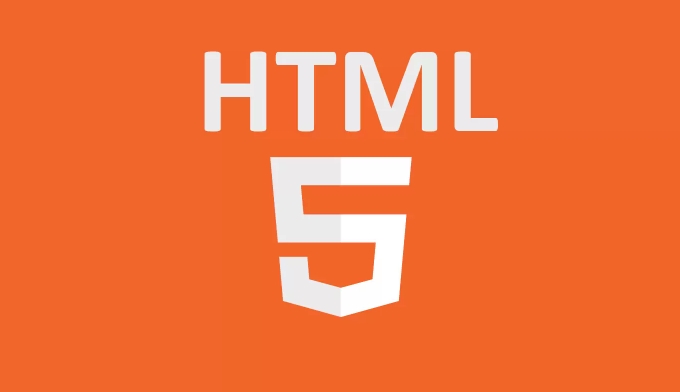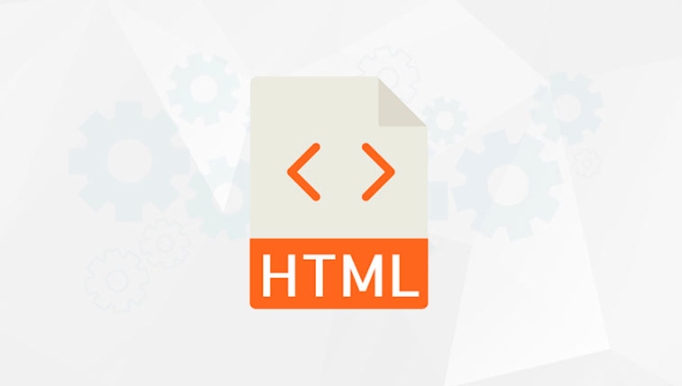How to specify character encoding for an HTML document?
Jul 09, 2025 am 02:23 AMThe method to specify the character encoding of an HTML document is to use the <meta charset="UTF-8"> tag. To ensure that the web page displays Chinese and special symbols correctly, it is recommended to use UTF-8 encoding uniformly. 1. Declaring the character set in HTML should use the simple method recommended by HTML5: <meta charset="UTF-8"> and place it at the beginning of the
section; 2. When saving the file, you must select UTF-8 format to avoid the editor saving it as other encoding by default; 3. The server needs to configure the response header to specify the character set, such as Apache adds AddDefaultCharset UTF-8, and Nginx configures charset utf-8. These three aspects can avoid the problem of garbled code.
Specifying the character encoding of HTML documents is actually simple, but it is very important, especially when dealing with Chinese, special symbols, or cross-platform compatibility. If not set up properly, the web page may appear garbled.

Recommended UTF-8
The most recommended approach at present is to use UTF-8 as character encoding for HTML documents. It supports text in almost all languages, including Chinese, Japanese, Korean, etc., and is widely supported by modern browsers.
In the past, some people would use GBK or GB2312 to process Chinese, but now they have basically turned to UTF-8 because it is more versatile and more suitable for international websites.

How to declare character encoding in HTML
To correctly specify the character set in HTML, the main way is to add the <meta> tag in section:
<meta charset="UTF-8">
This writing method is concise and effective, and is also a recommended way for HTML5 standard. If you see an older writing style, it might be like this:

<meta http-equiv="Content-Type" content="text/html; charset=gbk">
This writing method can also work, but it is no longer recommended in HTML5. It is recommended to use charset="UTF-8" in a unified manner.
What should be noted is:
- This
<meta>tag should be placed as early as possible in<head>section, preferably before or immediately after<title>. - If you set the character set in other ways (such as HTTP headers), the meta tags in HTML may not take effect.
At the same time, pay attention to the file saving format
In addition to declaring character sets in HTML, there is another point that is easily overlooked: the save encoding format of the file itself .
In other words, you must also ensure that the HTML file you write is in UTF-8 format when saving. Different editors may have different default encodings. For example, Notepad under Windows is sometimes saved as ANSI by default. At this time, even if you write UTF-8 in HTML, it is useless.
The solution is very simple:
- Use common code editors (such as VS Code, Sublime Text, Notepad, etc.)
- When saving, select "UTF-8" or "UTF-8 without BOM" as the encoding format.
Some editors will display the encoding method of the current file in the status bar, remember to check it.
Server configuration is also critical
Sometimes you will find that the page is still garbled, which may not be a problem with HTML, but the server does not properly set the character set in the response header.
For example, in the HTTP response header, you can add:
Content-Type: text/html; charset=UTF-8
If you are using an Apache server, you can add it in the .htaccess file:
AddDefaultCharset UTF-8
If it is Nginx, you can add:
charset utf-8;
This ensures that when the browser receives the page, the first reaction is to use UTF-8 to parse it.
Basically that's it. As long as these three aspects (HTML meta tags, file saving format, and server settings) are consistent, there will basically be no problems.
The above is the detailed content of How to specify character encoding for an HTML document?. For more information, please follow other related articles on the PHP Chinese website!

Hot AI Tools

Undress AI Tool
Undress images for free

Undresser.AI Undress
AI-powered app for creating realistic nude photos

AI Clothes Remover
Online AI tool for removing clothes from photos.

Clothoff.io
AI clothes remover

Video Face Swap
Swap faces in any video effortlessly with our completely free AI face swap tool!

Hot Article

Hot Tools

Notepad++7.3.1
Easy-to-use and free code editor

SublimeText3 Chinese version
Chinese version, very easy to use

Zend Studio 13.0.1
Powerful PHP integrated development environment

Dreamweaver CS6
Visual web development tools

SublimeText3 Mac version
God-level code editing software (SublimeText3)

Hot Topics
 Explain the purpose of the role attribute in ARIA.
Jun 14, 2025 am 12:35 AM
Explain the purpose of the role attribute in ARIA.
Jun 14, 2025 am 12:35 AM
ARIA's role attribute is used to define the role of web elements and improve accessibility. 1. Role attribute helps assistive technology to understand the functions of elements, such as buttons, navigation, etc. 2. Use role attributes to assign specific roles to non-semantic HTML elements. 3. The role attribute should be consistent with the element behavior and be verified by the accessibility tool test.
 HTML and Design: Creating the Visual Layout of Websites
Jun 14, 2025 am 12:39 AM
HTML and Design: Creating the Visual Layout of Websites
Jun 14, 2025 am 12:39 AM
How to create a website layout? 1. Use HTML tags to define the content structure, such as, ,. 2. Control styles and positions through CSS, using box model, float or Flexbox layout. 3. Optimize performance, reduce HTTP requests, use cache and optimize images, and ensure responsive design.
 How can you ensure your HTML code is readable and maintainable?
Jun 10, 2025 am 12:06 AM
How can you ensure your HTML code is readable and maintainable?
Jun 10, 2025 am 12:06 AM
Improve the readability and maintainability of HTML code can be achieved through the following steps: 1. Use semantic tags, such as, etc. to make the code structure clear and improve SEO effect; 2. Keep the code formatted and use consistent indentation and spaces; 3. Add appropriate comments to explain the code intention; 4. Avoid excessive nesting and simplify the structure; 5. Use external style sheets and scripts to keep the HTML concise.
 How do I stay up-to-date with the latest HTML standards and best practices?
Jun 20, 2025 am 08:33 AM
How do I stay up-to-date with the latest HTML standards and best practices?
Jun 20, 2025 am 08:33 AM
The key to keep up with HTML standards and best practices is to do it intentionally rather than follow it blindly. First, follow the summary or update logs of official sources such as WHATWG and W3C, understand new tags (such as) and attributes, and use them as references to solve difficult problems; second, subscribe to trusted web development newsletters and blogs, spend 10-15 minutes a week to browse updates, focus on actual use cases rather than just collecting articles; second, use developer tools and linters such as HTMLHint to optimize the code structure through instant feedback; finally, interact with the developer community, share experiences and learn other people's practical skills, so as to continuously improve HTML skills.
 How do I use the element to represent the main content of a document?
Jun 19, 2025 pm 11:09 PM
How do I use the element to represent the main content of a document?
Jun 19, 2025 pm 11:09 PM
The reason for using tags is to improve the semantic structure and accessibility of web pages, make it easier for screen readers and search engines to understand page content, and allow users to quickly jump to core content. Here are the key points: 1. Each page should contain only one element; 2. It should not include content that is repeated across pages (such as sidebars or footers); 3. It can be used in conjunction with ARIA properties to enhance accessibility. Usually located after and before, it is used to wrap unique page content, such as articles, forms or product details, and should be avoided in, or in; to improve accessibility, aria-labeledby or aria-label can be used to clearly identify parts.
 How do I create a basic HTML document?
Jun 19, 2025 pm 11:01 PM
How do I create a basic HTML document?
Jun 19, 2025 pm 11:01 PM
To create a basic HTML document, you first need to understand its basic structure and write code in a standard format. 1. Use the declaration document type at the beginning; 2. Use the tag to wrap the entire content; 3. Include and two main parts in it, which are used to store metadata such as titles, style sheet links, etc., and include user-visible content such as titles, paragraphs, pictures and links; 4. Save the file in .html format and open the viewing effect in the browser; 5. Then you can gradually add more elements to enrich the page content. Follow these steps to quickly build a basic web page.
 What is an HTML tag?
Jun 13, 2025 am 12:36 AM
What is an HTML tag?
Jun 13, 2025 am 12:36 AM
HTMLtagsareessentialforstructuringwebpages.Theydefinecontentandlayoutusinganglebrackets,ofteninpairslikeand,withsomebeingself-closinglike.HTMLtagsarecrucialforcreatingstructured,accessible,andSEO-friendlywebpages.
 How do I create checkboxes in HTML using the element?
Jun 19, 2025 pm 11:41 PM
How do I create checkboxes in HTML using the element?
Jun 19, 2025 pm 11:41 PM
To create an HTML checkbox, use the type attribute to set the element of the checkbox. 1. The basic structure includes id, name and label tags to ensure that clicking text can switch options; 2. Multiple related check boxes should use the same name but different values, and wrap them with fieldset to improve accessibility; 3. Hide native controls when customizing styles and use CSS to design alternative elements while maintaining the complete functions; 4. Ensure availability, pair labels, support keyboard navigation, and avoid relying on only visual prompts. The above steps can help developers correctly implement checkbox components that have both functional and aesthetics.






